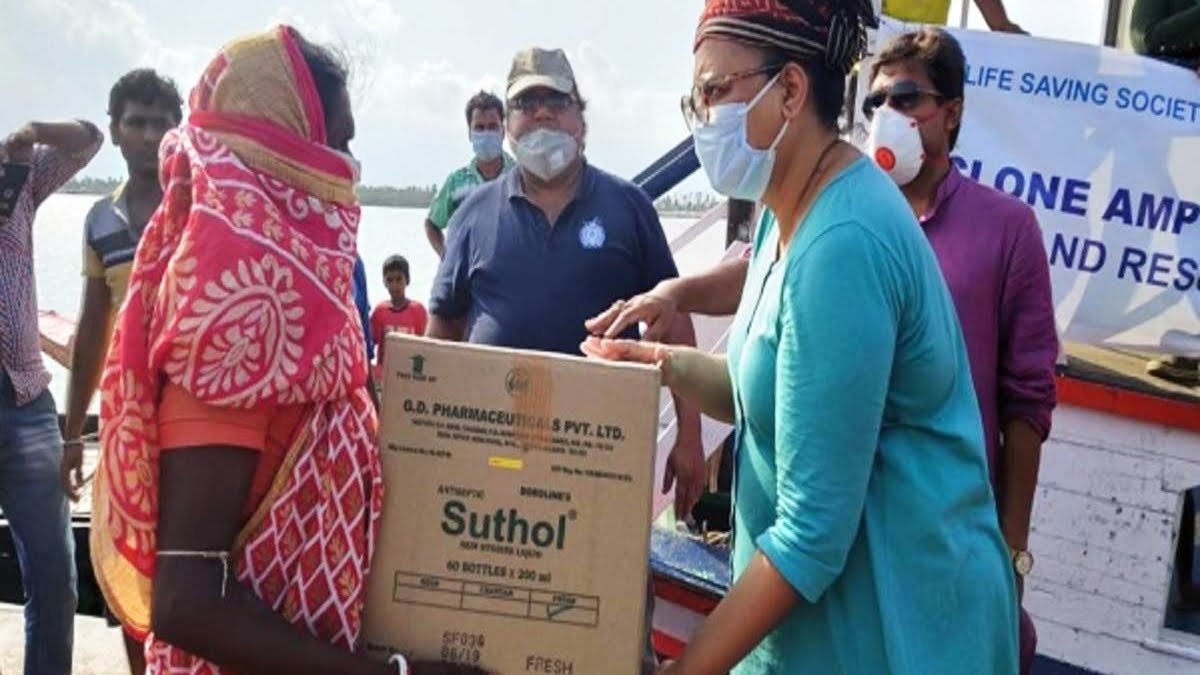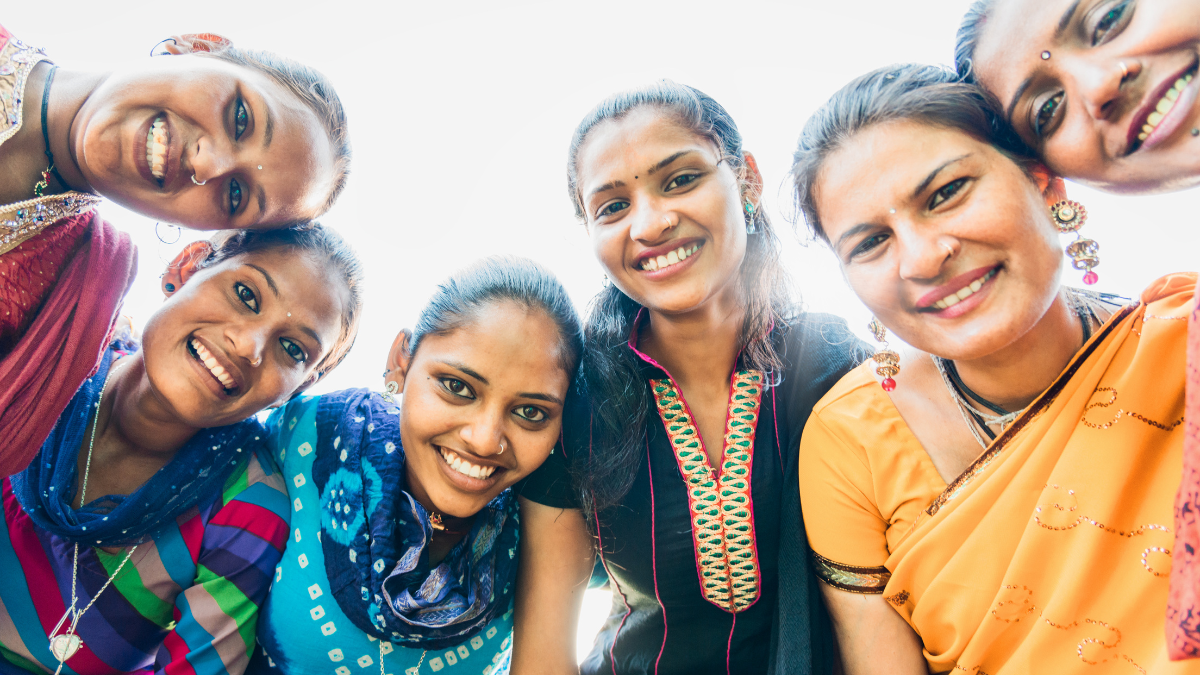On May 20, 2020, Cyclone Amphan made landfall between Digha in West Bengal and Hatiya Island in Bangladesh. The extremely severe cyclonic storm is estimated to have claimed about 84 lives alongside causing massive damage to property. Like every disaster, Amphan too has produced individuals who have embarked on relief tourism with no understanding of what might have a long-term effect on the lives of those affected. As a regular relief worker, I am used to being inundated with torn and used clothes to be donated to the “poor and needy”. This kind of behaviour bespeaks an entitlement where urban, middle class individuals use a natural disaster to experience a kind of moral high from engaging in depoliticised charity. This behaviour is only a reproduction of the inequality of the urban-rural divide, or the divide between the middle class and the working class. It is a casteist, self-congratulatory mode of engaging with the oppressed.
Amphan has produced individuals who have embarked on relief tourism with no understanding of what might have a long-term effect on the lives of those affected. As one among the regular relief workers, I am used to being inundated with torn and used clothes to be donated to the “poor and needy”.
Also read: Covid-19 Relief Work & The Patriarchal Challenges That Cropped Up
That is not the only reason why climate change and environmental crises such as the Amphan are feminist concerns. Cyclone Amphan completely uprooted the infrastructure of sections of southern West Bengal. The roofs of rural kachcha houses have been completely blown away by strong winds. Further, Amphan caused damage in the form of collapsed embankments and the resulting contamination of fields and potable water sources with saline water. According to locals at Raideeghi, a settlement near Sundarban, it will take at least 4-5 monsoons for their contaminated fields to start producing crops again. Moreover, many of their villages have no access to potable water beyond local ponds. With the ponds filled with brackish water, locals have to walk kilometres to fetch drinking water. As intersectional feminists who understand the gendered impact of economic crisis, the aspect that we cannot undermine is how fetching water is gendered labour and is usually done by the women of the house. Goes without saying, cyclone Amphan will considerably increase their workload.
Residents and activists in West Bengal have claimed that despite massive destruction, the central government and the national media did not give the cyclone due importance. Feminism is not just about activism and education related to women and other marginalised gender minorities. At its heart, feminism questions power discrepancies and hierarchies in state and other institutional and non-institutional systems. This is precisely why we feminists, cannot turn our faces away from the unequal distribution of power and power networks that result in a highly centralised (read: Delhi-centric) form of government and media, relegating to the margins the states that exist beyond India’s Hindi belt. Further, the feminist lens could be applied to understand which class of the society gets impacted more by such environmental crises – the lower class and castes on the periphery much more than the others. Further, within the states too, such discrepancies exist. News from Kolkata is far more important than news from its peripheries.
The urban feminist activists, especially affiliated to the university-based feminist activist groups, cause more harm than good. These relief workers’ groups organise in spurts, i.e. they may go and do some aid work once, but they mostly cannot be found anywhere near a village for the rest of the year, even though these relief workers’ interventions are done with keeping the most feminist ideals in mind.
The urban feminist activists, especially affiliated to the university-based feminist activist groups, cause more harm than good. These relief workers’ groups organise in spurts, i.e. they may go and do some aid work once, but they mostly cannot be found anywhere near a village for the rest of the year. It is imperative to say that these relief workers’ interventions are done with the most feminist ideals in mind – sanitary napkins, nutritious food, milk for babies etc., however these are distributed once and then forgotten. These are all necessities in the lives of an underprivileged woman, which is precisely why such efforts need to be sustained and not sporadic. Feminist activist groups also suffer from a debilitating lack of workers – sometimes it feels like there are roughly only about a hundred feminist activists in the city who organise five hundred protests and relief camps, write articles, engage in advocacy, etc. Therefore, sustained engagement for feminist-activist relief workers can often be a challenge.
Activism is a competitive space and there is added scrutiny of feminist activist groups to “work in the field”. Non-feminist left organisations work well within this competitive paradigm as they have a larger numbers of organised activists. For feminists however, this competition only proves detrimental as they are forced to pander to a scrutinising gaze that is inherently sexist in nature. This leads them to have to engage with all political movements equally when they do not have the resources to do so.
Further, the need for one’s aid work to be visible through social media or mainstream media has created a politics of the appearance of work over actual political action. Activist or even aid relief workers’ groups feel the need to showcase their work within 48 hours of a major event. NGOs engage in this mode of politics as they need to show output to their funders. But creating a culture of momentary visual activism diminishes the relief work efforts, considering how natural disasters like cyclones have long-term impacts, far beyond the social media attention span of two minutes. Moreover, relief work based on social media validation of relief workers can mean death to sincere and sustained engagement with relief or developmental work in rural areas and could even perpetuate slow violence. As long as the media spectacle continues, the urban masses of relief workers move to the villages to conduct relief work. Eventually, as public memory fades and disaster relief falls out of vogue, rural communities find themselves unsupported. What these communities need is sustainable engagement with urban relief workers who could command enough resources to sustainably arrange for the capital for developmental work.
In my conversations with other relief workers’ groups, I have sensed a disinterest in them to commit to sustained developmental practices in affected villages. While some of these relief workers have their hands full, arranging for say lockdown relief, other relief workers just lack the political experience required to make these changes. While this is not to dissuade those who want to volunteer in relief work, it is definitely an attempt to check on the conscience of those who are already engaged.
The best forms of relief work engage communities and leave a lasting impact on both the relief workers as well as the affected communities. These are not always difficult measures that require immense financial capital or labour to pull off. Cleaning out ponds of brackish water is an affordable and long-term method to improve quality of life in villages. It does not require lakhs, instead just a few thousands to sponsor the fuel and pump that cleans out brackish water from a pond and pumps in fresh water. Similarly, the creation of more water sources like deep tubewells can raise living standards in villages, particularly of women, who will then not have to travel far every day to fetch water. Each community has its specific own needs, and relief workers must actively communicate to these communities to find out what these are, in order to meet them. However, it is important to remember that this can only be a stopgap measure and does not amount to structural change.
Also read: Being An Anti-Caste Ally—5 Things To Keep In Mind
How many relief workers are bothered about the issue of concrete embankments in the Sundarbans which have turned into their own industry, involving government corruption, syndicates etc. and which threaten the fragile ecosystem of the region?
Structural reliance on stopgap measures will only reproduce unequal power distributions in the structure. The absence of in-depth engagement with local issues also reproduces a form of social hierarchy and limits the prospects of relief. How many relief workers are bothered about the issue of concrete embankments in the Sundarbans which have turned into their own industry, involving government corruption, syndicates etc. and which threaten the fragile ecosystem of the region? How many relief workers are politically concerned about the appropriation of state government aid by TMC’s panchayat pradhans and the advantage such corruption provides to the opposition, the BJP? Relief needs to be thoroughly politicised and examined in the light of power, privilege and its reproduction. Disaster affected communities should not otherised into passive receptors of occasional, sporadic relief distributed by the bhodrolok relief workers from Kolkata. They do not need our alms; they demand our solidarity.
Featured Image Source: Times Of India
About the author(s)
Ekabali Ghosh is an M. Phil. student in the Department of English, Jadavpur University. She is a feminist activist with about four years experience of organizing on the ground. She is the founder of Women Against Sexual Harassment, a platform that supports survivors of sexual violence and Queer Studies Research Cluster, an interdisciplinary network of researchers in the field of queer studies. She is passionate about issues of social justice, feminist theory and eating junk food. She can be found on Facebook and Instagram.





This is a really insightful piece, thank you for sharing.